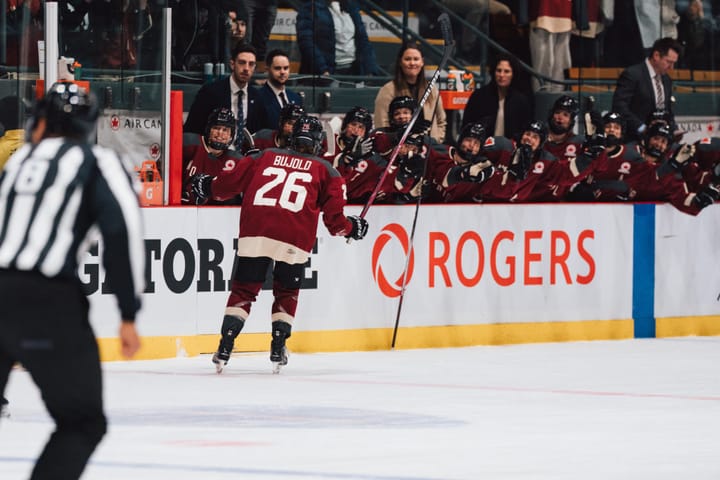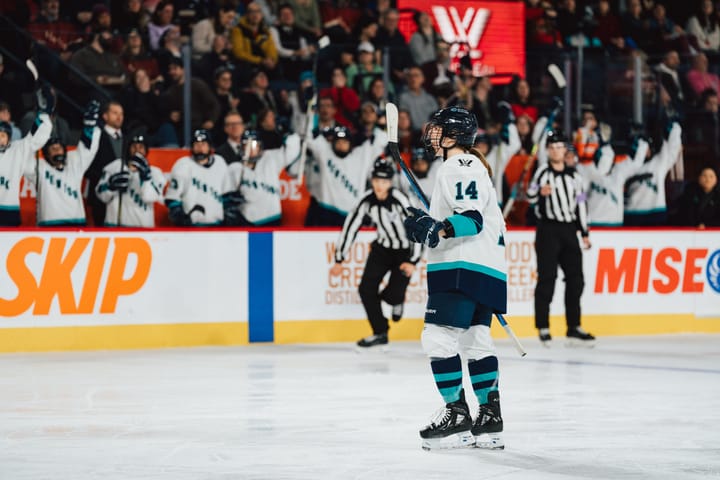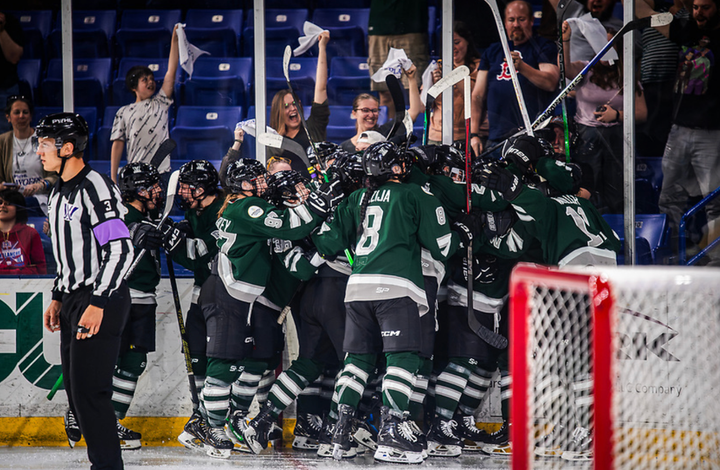NWHL Deputy Commissioner Hayley Moore on the 2018 NWHL Draft
A Q&A with Moore on the changes we saw, how they came about
Prior to the 2018 Draft, the NWHL’s draft format was, at best, ineffective. At worst, it was controversial and potentially problematic.
When the league announced plans to push the 2018 Draft back, many were hoping to see a significant change. As it turns out, that is exactly what we saw.
A month after the fourth draft in NWHL history, we are still learning what has changed and why it has changed. We’re also all wondering just how big of a step this was in a right direction. And, of course, we’re curious to know just how much communication there was between current NCAA players and their coaches with the NWHL.
Hayley Moore, the NWHL’s deputy commissioner and head of player development, recently spoke to The Ice Garden about the 2018 Draft to shed some light on what changed this year.
The Ice Garden: One thing that I noticed this year with the draft is that there were quotes from NCAA players and coaches. You even mentioned that there was communication with the NCAA in a tweet as well. How did that process came about?
Hayley Moore: Working with the NCAA is one of my favorite parts of the job. Stepping into my new role in Season 3, it has been a big focus of mine: to continue to establish stronger relationships and build with NCAA coaches, moving forward, educate them on our league.
We’re growing and we’re adapting every year so we’re adjusting based on what makes sense for all parties involved. There was definitely a lot of communication in past drafts as well, but I think every year we’ve gotten stronger. One of the reasons why we kind of shifted our draft back to December of this year was based on the history of the draft in the past and getting feedback from coaches.
A message from Deputy Commissioner @HayleyMoore9: "Welcome to the 2018 #NWHLDraft! It’s been an exciting fall tracking a number of current seniors and watching their talent shine. Thank you to the college coaches for their communication and for advocating for their players." pic.twitter.com/b6AYZqFvCk
— NWHL (@NWHL) December 19, 2018
Coming into December and having the draft mid-season for the NCAA players was something that I think ended up benefiting all parties. It gave our current coaches time to understand where their current rosters are at, what needs they might be looking to fill the void in while they’re in-season [and] down the final stretch of this season. So it helps them assess and get a handle on what their current team is versus trying to kind of anticipate it going into a season — and then also getting the layout, establishing those conversations, and watching players throughout the first half of their senior season.
You also take away the possibility of having players redshirt which has happened in the past. Take Lexie Lang for example, who was drafted in the 2017 Draft to Boston and ended up having to take her senior season off. She could have been included in this year’s draft had the 2017 Draft occurred later.
[From] all of our learning, we look to improve and we look to build those relationships and to adapt based on the needs of our league, the players that are [about] to enter it, and the NCAA coaches that we work with.
Really that’s just been a huge emphasis of mine in my new role. I’m working to connect all of our coaching staffs with NCAA coaches and to build those relationships and to increase communication and educate everyone on the process. It’s just been a huge emphasis of our’s as a league. It’s something that I think helps to streamline the process, and have everyone a little bit more informed as we entered the draft this year.
TIG: You mentioned Lexie as redshirt and there’s a few other players that returned to the NCAA after being drafted. Are they still available to draft or are they technically drafted now?
HM: Once a player is drafted, they have completed their draft eligibility. So in that sense they are retained by the team that drafts them. And once they are eligible to kind of sign with a NWHL team, they would go through that same protocol that all players do once the restricted free agency and free agency periods begin.
TIG: So, are you the one that’s working a lot with the NWHL coaches to identify players or what is that process like?
HM: I try to do as much of the preliminary legwork as possible to give our coaches the tools that they need to to strategize and connects with NCAA coaches and ultimately make their picks. It was a process that really began in the offseason, in the summer, with connecting all of the NCAA coaches to our current coaching staffs and establishing communication as early as June. From there, it was building out a database for all of our coaches, pushing schedule information to them if they need to see players, stats, and specific interests wherever it may lie. I also am fielding all of our NCAA questions and then kind of pushing those answers on to our current coaches.
So essentially, being the liaison between the college coaches and our coaching staffs. To put together all of the information so that they’re able to have easier conversations and facilitate the whole process.
TIG: This season we saw the first NCAA D III player to be drafted. There’s also a few other DIII players currently playing in the league. How do you see that pipeline evolving in the future?
HM: I think it is an exciting component to women’s hockey right now, in general. I think that it’s something I see at the high school level, I constantly have this conversation with my players who are looking to enter college hockey. Division III hockey is very good right now, better than it has ever been. I think you see that in the Division III players who are currently playing in our league and who are successful.
While it’s certainly not an easy jump to make, I think it’s one that some players have been able to do very successfully. Just because a player is playing Division III hockey doesn’t mean that they don’t have a professional career ahead of them and I think that’s important. It is a lesson that we’ve learned through our process of existence, but also an important lesson that college hockey players can understand.
It just speaks to the volume and depth of the women’s game right now.
I think that’s a really exciting thing about our league. One of my favorite things about our league is that we exist now and that players have the opportunity to continue to develop their game after college. Many players peak later, many women athletically. It’s statistically clear that women are peaking athletically later in life than men are. I think it’s just great that we have a league [where] players can continue to develop and really shine their game at that next level [instead of] calling it quits before they maybe hit their peak.
So, it’s up to us to identify the players that have an infinite amount of growth potential ahead of them and the drive to do it, and give them the opportunity to continue.





Comments ()